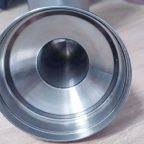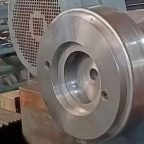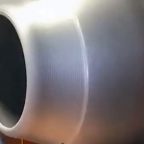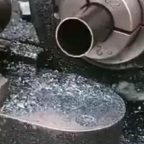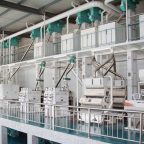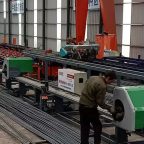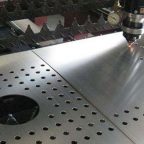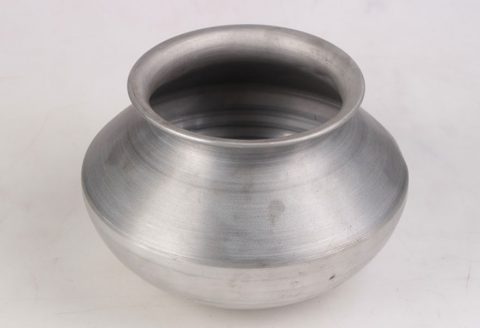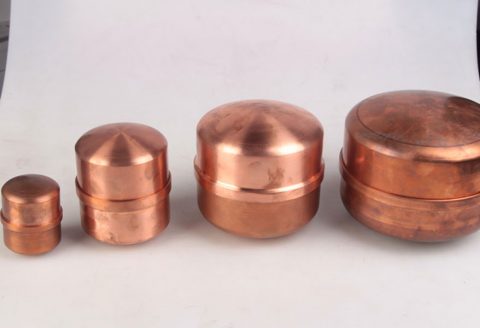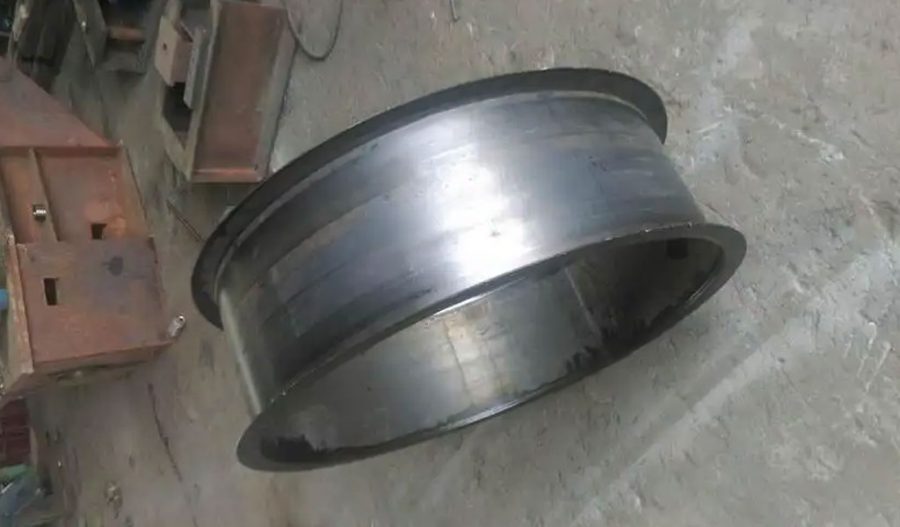
Metal spinning, also known as spin forming or centrifugal forming, is a metalworking process that involves rotating a metal disc or tube at high speeds while applying localized pressure to shape it into axially symmetric components. This technique is valued for its ability to produce seamless, high-strength parts with minimal material waste, making it a preferred method in industries such as aerospace, automotive, defense, and energy. While metal spinning is versatile and compatible with a wide range of materials, working with special alloys—such as high-strength, high-temperature, or corrosion-resistant alloys like Hastelloy, Inconel, titanium, and magnesium alloys—presents unique challenges. These difficulties stem from the complex mechanical, thermal, and metallurgical properties of special alloys, which demand advanced techniques, precise control, and specialized equipment. This article explores the multifaceted difficulties encountered in metal spinning special alloys, providing a comprehensive analysis of material properties, process limitations, technological challenges, and strategies for overcoming these obstacles.
Introduction to Metal Spinning and Special Alloys
Metal spinning is a non-subtractive manufacturing process that shapes a flat metal blank or preform into a hollow, axisymmetric component by pressing it against a rotating mandrel or chuck using rollers or other tools. The process is typically performed on a lathe or specialized spinning machine, with the metal blank clamped against the mandrel and rotated at high speeds (often 500–2000 RPM, depending on the material and part geometry). The roller, guided manually or via computer numerical control (CNC), applies localized pressure to deform the metal incrementally, allowing it to conform to the mandrel’s shape. This incremental deformation distinguishes metal spinning from other forming processes like stamping or deep drawing, as it reduces forming forces and enables the production of complex shapes with relatively low tooling costs.
Special alloys, in the context of this article, refer to advanced metallic materials engineered for exceptional performance under extreme conditions. These include:
- Nickel-based superalloys (e.g., Inconel, Hastelloy): Known for high-temperature strength, corrosion resistance, and creep resistance, used in aerospace turbine components and chemical processing equipment.
- Titanium alloys (e.g., Ti-6Al-4V): Valued for their high strength-to-weight ratio, corrosion resistance, and biocompatibility, common in aerospace and biomedical applications.
- Magnesium alloys (e.g., AZ31, WE43): Lightweight materials with high specific strength, used in aerospace and automotive industries but challenging due to low ductility at room temperature.
- High-strength aluminum alloys (e.g., 7075, 2024): Lightweight with excellent mechanical properties, used in aerospace but prone to cracking during forming.
- Refractory metal alloys (e.g., molybdenum, tungsten): High melting points and strength for extreme-temperature applications, such as rocket nozzles.
These alloys are critical for high-performance applications but pose significant challenges in metal spinning due to their unique properties, such as low ductility, high strength, susceptibility to cracking, and complex microstructural behavior. The difficulties in spinning these materials are compounded by the need for precision, repeatability, and cost-effectiveness in industrial settings.
Material Properties of Special Alloys
The challenges in metal spinning special alloys are closely tied to their intrinsic material properties, which govern their behavior under the mechanical and thermal stresses of the spinning process. Below is a detailed examination of the key properties that contribute to these difficulties.
High Strength and Low Ductility
Special alloys are often engineered for high yield strength and ultimate tensile strength, which make them resistant to deformation. For example, Inconel 718 has a yield strength of approximately 1034 MPa at room temperature, compared to 110–140 MPa for low-carbon steel. This high strength requires greater forming forces, increasing the risk of tool wear, mandrel deflection, and machine overload. Moreover, many special alloys exhibit low ductility, particularly at ambient temperatures. Magnesium alloys, for instance, have a hexagonal close-packed (HCP) crystal structure, which limits slip systems and results in poor formability unless heated to 200–300°C, where twinning and additional slip systems become active.
Low ductility increases the likelihood of cracking, wrinkling, or localized necking during spinning. For titanium alloys like Ti-6Al-4V, the combination of high strength (yield strength ~880 MPa) and moderate ductility (elongation ~10–15%) necessitates careful control of strain rates and temperatures to avoid fracture. The table below compares the mechanical properties of selected special alloys and conventional metals used in spinning.
Table 1: Mechanical Properties of Special Alloys vs. Conventional Metals
| Material | Yield Strength (MPa) | Ultimate Tensile Strength (MPa) | Elongation (%) | Crystal Structure | Typical Spinning Challenges |
|---|---|---|---|---|---|
| Inconel 718 | 1034 | 1276 | 12 | FCC | High forming forces, cracking |
| Hastelloy C-276 | 365 | 790 | 40 | FCC | Corrosion resistance, tool wear |
| Ti-6Al-4V | 880 | 950 | 14 | HCP + BCC | Low ductility, springback |
| AZ31 Magnesium | 160 | 260 | 15 | HCP | Poor room-temperature formability |
| 7075 Aluminum | 503 | 572 | 11 | FCC | Cracking, anisotropy |
| Low-Carbon Steel | 110–140 | 340–420 | 20–30 | BCC | Baseline for comparison |
| 304 Stainless Steel | 215 | 505 | 70 | FCC | Moderate challenges |
Thermal and Chemical Sensitivity
Special alloys often exhibit complex thermal and chemical behaviors that complicate the spinning process. Nickel-based superalloys like Hastelloy and Inconel are designed to withstand high temperatures (up to 1000°C or more), but their thermal conductivity is relatively low (e.g., 11.2 W/m·K for Inconel 718 vs. 51.9 W/m·K for aluminum). This low thermal conductivity leads to localized heat buildup during spinning, especially in hot spinning processes, which can cause thermal gradients, uneven deformation, and microstructural changes such as grain growth or phase transformations.
Titanium alloys are highly reactive with oxygen, nitrogen, and hydrogen at elevated temperatures, forming brittle oxide or nitride layers that compromise surface quality and mechanical properties. This necessitates spinning in inert atmospheres (e.g., argon or vacuum), increasing process complexity and cost. Magnesium alloys are similarly reactive and prone to ignition at high temperatures, requiring careful temperature control and the use of protective coatings or atmospheres.
Microstructural Complexity
The microstructure of special alloys significantly influences their spinnability. Nickel-based superalloys often contain a gamma-prime (γ’) phase, which provides high-temperature strength but makes the material prone to strain hardening and cracking during cold forming. Titanium alloys exhibit a dual-phase (alpha + beta) microstructure, with the alpha phase being less ductile than the beta phase. The balance between these phases, influenced by temperature and strain rate, determines formability. For example, spinning Ti-6Al-4V at 600–800°C enhances ductility by increasing the beta-phase fraction, but excessive temperatures can lead to grain coarsening and reduced strength.
Magnesium alloys suffer from strong crystallographic texture due to their HCP structure, leading to anisotropic deformation behavior. This anisotropy causes uneven thinning or wrinkling during spinning, particularly for complex geometries. High-strength aluminum alloys like 7075 are susceptible to precipitation hardening, where improper heat treatment or thermal exposure during spinning can alter the distribution of precipitates (e.g., MgZn2), affecting strength and corrosion resistance.
Process-Related Challenges in Metal Spinning
Beyond material properties, the metal spinning process itself introduces challenges when working with special alloys. These challenges are related to equipment limitations, tool design, process parameters, and the inherent mechanics of incremental deformation.
High Forming Forces and Equipment Limitations
The high strength of special alloys requires substantial forming forces, which can exceed the capacity of standard spinning machines. For example, spinning a 2 mm thick Inconel 718 blank into a conical shape may require forces of 50–100 kN, compared to 10–20 kN for aluminum of similar thickness. This necessitates heavy-duty spinning lathes with robust spindles, high-torque motors, and rigid frames. Smaller or less capable machines may experience vibration, deflection, or premature failure under such loads.
CNC spinning machines, while offering precision and repeatability, must be equipped with advanced control systems to handle the dynamic forces and variable strain rates encountered with special alloys. The cost of such equipment can be prohibitive for small-scale manufacturers, limiting the adoption of spinning for high-performance alloys.
Tool Wear and Material Interactions
The rollers used in metal spinning are typically made of hardened tool steel or carbide to withstand the stresses of forming. However, special alloys like Inconel and titanium are abrasive and prone to galling (adhesive wear), causing rapid tool wear and surface defects on the spun part. For instance, titanium’s high reactivity can lead to material transfer onto the roller, resulting in surface galling or scratches. Hastelloy, with its high nickel and molybdenum content, is similarly abrasive, reducing tool life and increasing maintenance costs.
To mitigate tool wear, manufacturers may use coated rollers (e.g., titanium nitride or diamond-like carbon coatings) or lubricate the interface with high-performance lubricants. However, these solutions add complexity and cost, and some lubricants may be incompatible with high-temperature spinning or reactive alloys.
Springback and Dimensional Accuracy
Springback, the elastic recovery of a material after deformation, is a significant issue in spinning special alloys due to their high strength and low modulus of elasticity. For example, titanium alloys have a Young’s modulus of ~110 GPa, compared to 200 GPa for steel, making them more prone to springback. This can lead to dimensional inaccuracies, particularly for parts with tight tolerances (e.g., aerospace components requiring ±0.1 mm precision).
Springback is influenced by factors such as material thickness, strain rate, and mandrel geometry. For high-strength aluminum alloys, springback can be exacerbated by anisotropic properties resulting from prior rolling or heat treatment. Compensating for springback requires predictive modeling (e.g., finite element analysis) and iterative adjustments to the mandrel shape or process parameters, increasing development time and cost.
Wrinkling and Fracture
Wrinkling and fracture are common failure modes in metal spinning, particularly for low-ductility alloys. Wrinkling occurs when compressive stresses in the flange region of the blank exceed the material’s buckling resistance, leading to localized folds or ripples. This is a particular concern for magnesium alloys, which have low compressive strength at room temperature. Fracture, on the other hand, results from excessive tensile stresses, often at the outer edge of the blank or in areas of high strain concentration.
The likelihood of wrinkling or fracture depends on the alloy’s formability, the blank’s thickness-to-diameter ratio, and the roller path. For example, spinning a thin (1 mm) Hastelloy blank into a deep conical shape may induce wrinkling due to the material’s high strength and limited ductility. Strategies to prevent these defects include optimizing roller paths, using multi-pass spinning, and applying heat to enhance formability.
Table 2: Common Failure Modes in Metal Spinning Special Alloys
| Failure Mode | Description | Affected Alloys | Causes | Mitigation Strategies |
|---|---|---|---|---|
| Wrinkling | Localized buckling or folding | Magnesium, Thin Hastelloy | High compressive stresses, low ductility | Multi-pass spinning, heating, optimized roller paths |
| Fracture | Cracking or tearing | Inconel, Titanium, 7075 Aluminum | Excessive tensile stresses, low ductility | Hot spinning, reduced strain rates, annealing |
| Springback | Elastic recovery causing dimensional errors | Titanium, High-strength Aluminum | High strength, low modulus | Predictive modeling, overforming, heat treatment |
| Surface Galling | Adhesive wear or material transfer | Titanium, Inconel | High reactivity, abrasion | Coated tools, lubricants, inert atmospheres |
Technological and Process Optimization Challenges
To successfully spin special alloys, manufacturers must address technological and process optimization challenges, including temperature control, strain rate management, and the integration of advanced simulation tools.
Temperature Control and Hot Spinning
Many special alloys require hot spinning to enhance formability and reduce forming forces. For example, magnesium alloys are typically spun at 200–400°C to activate additional slip systems, while titanium alloys may be spun at 600–800°C to increase ductility. Hot spinning introduces several challenges:
- Thermal gradients: Uneven heating can cause localized variations in formability, leading to defects like thinning or cracking. For instance, Inconel’s low thermal conductivity results in steep temperature gradients, requiring precise heating systems (e.g., induction or laser heating).
- Material reactivity: Titanium and magnesium alloys are prone to oxidation or ignition at elevated temperatures, necessitating inert atmospheres or protective coatings.
- Equipment complexity: Hot spinning requires specialized furnaces, insulated mandrels, and temperature-resistant rollers, increasing equipment costs and maintenance.
Maintaining consistent temperatures across the blank is critical, as even small deviations can alter the microstructure and mechanical properties. For example, overheating Ti-6Al-4V can cause beta-phase grain growth, reducing fatigue strength, while underheating may result in insufficient ductility.
Strain Rate Sensitivity
Special alloys are often strain-rate-sensitive, meaning their mechanical behavior changes with the speed of deformation. For instance, titanium alloys exhibit increased flow stress at high strain rates, requiring slower roller speeds to avoid cracking. Conversely, magnesium alloys benefit from moderate strain rates at elevated temperatures, where dynamic recrystallization enhances formability. Balancing strain rate with other parameters (e.g., temperature, roller pressure) is a complex task that requires precise control and often relies on trial-and-error or simulation-based optimization.
Finite Element Analysis and Process Modeling
Finite element analysis (FEA) has become a critical tool for optimizing metal spinning processes, particularly for special alloys. FEA allows manufacturers to simulate stress-strain distributions, predict failure modes, and optimize roller paths before physical trials. However, modeling special alloys is challenging due to:
- Complex material models: Special alloys often exhibit non-linear stress-strain behavior, strain-rate sensitivity, and temperature-dependent properties, requiring sophisticated constitutive models (e.g., Johnson-Cook or crystal plasticity models).
- Long computation times: The incremental nature of spinning, combined with the need for fine mesh sizes to capture localized deformation, results in computationally intensive simulations.
- Microstructural evolution: Predicting changes in grain size, texture, or phase transformations during spinning requires coupling FEA with microstructural models, which is still an emerging field.
Despite these challenges, FEA has been successfully used to optimize spinning processes for alloys like 7075 aluminum and Inconel 718, reducing trial-and-error costs and improving part quality.
Industry-Specific Challenges
The difficulties in spinning special alloys vary by industry, as each sector imposes unique requirements for part performance, tolerances, and production volumes.
Aerospace Industry
The aerospace industry relies heavily on special alloys like titanium, Inconel, and high-strength aluminum for components such as jet engine cones, satellite nose cones, and rocket nozzles. Key challenges include:
- Tight tolerances: Aerospace parts often require tolerances of ±0.1 mm or less, which are difficult to achieve due to springback and thermal distortion.
- Material certification: Alloys must meet stringent standards (e.g., AMS, ASTM) for composition, microstructure, and mechanical properties, requiring rigorous process control and documentation.
- Complex geometries: Components like turbine shrouds or nozzle liners have intricate shapes that demand multi-pass spinning and precise roller control.
Hot spinning is often employed in aerospace to handle high-strength alloys, but the need for inert atmospheres and high-temperature equipment increases costs. For example, spinning a titanium rocket nozzle liner may require a vacuum chamber to prevent oxidation, adding significant expense.
Automotive Industry
In the automotive sector, lightweight alloys like magnesium and high-strength aluminum are used to reduce vehicle weight and improve fuel efficiency. Challenges include:
- High production volumes: Automotive components require cost-effective processes for large-scale production, but the slow cycle times of spinning special alloys can be a bottleneck.
- Surface quality: Parts like wheel rims or suspension components must have a smooth, defect-free finish, which is challenging due to galling or tool marks.
- Cost sensitivity: The high cost of special alloys and specialized equipment must be balanced against the need for competitive pricing.
Energy and Chemical Processing
In energy and chemical processing, alloys like Hastelloy and Inconel are used for corrosion-resistant components such as heat exchanger tubes and reactor vessels. Challenges include:
- Corrosion resistance: The spinning process must not introduce surface defects or residual stresses that could compromise corrosion performance.
- Thick blanks: Some components require thick blanks (e.g., 5–10 mm), increasing forming forces and the risk of defects like wrinkling.
- Regulatory compliance: Parts must meet industry standards (e.g., ASME, API), requiring extensive testing and validation.
Strategies for Mitigating Difficulties
To overcome the challenges of spinning special alloys, manufacturers employ a range of strategies, from process modifications to advanced technologies.
Hot Spinning and Temperature Control
Hot spinning is the most common approach for improving the formability of special alloys. By heating the blank to an optimal temperature, manufacturers can reduce flow stress, enhance ductility, and minimize cracking. Key considerations include:
- Heating methods: Induction heating, laser heating, or gas torches are used to achieve uniform temperatures. Induction is preferred for its precision and speed.
- Temperature monitoring: Infrared pyrometers or thermocouples ensure consistent temperatures, preventing overheating or underheating.
- Inert atmospheres: For reactive alloys like titanium and magnesium, spinning in argon or vacuum chambers prevents oxidation and ignition.
Multi-Pass Spinning
Multi-pass spinning involves forming the part in several incremental steps, allowing for gradual deformation and stress relaxation. This approach is particularly effective for high-strength alloys like Inconel, where single-pass spinning may cause cracking. By optimizing the roller path and pass sequence, manufacturers can reduce wrinkling and achieve complex geometries.
Advanced Tooling and Lubrication
To address tool wear and surface defects, manufacturers use advanced tooling and lubrication strategies:
- Coated rollers: Titanium nitride (TiN), chromium nitride (CrN), or diamond-like carbon (DLC) coatings reduce friction and wear.
- High-performance lubricants: Molybdenum disulfide (MoS2) or graphite-based lubricants are used for high-temperature spinning, while water-based emulsions may suffice for cold spinning.
- Mandrel design: Mandrels made of heat-resistant materials (e.g., ceramic or refractory metals) are used for hot spinning to withstand thermal stresses.
Process Simulation and Optimization
FEA and other simulation tools are critical for optimizing spinning processes. By modeling stress-strain behavior, temperature distributions, and microstructural evolution, manufacturers can:
- Predict failure modes like wrinkling or fracture.
- Optimize roller paths and pass sequences.
- Compensate for springback by adjusting mandrel geometry.
Emerging techniques like cellular automaton (CA) modeling are being used to simulate microstructural changes during hot spinning, particularly for alloys like titanium and magnesium.
Alloy Modification and Pre-Treatment
In some cases, modifying the alloy’s composition or pre-treating the blank can improve spinnability. For example:
- Grain refinement: Using processes like equal-channel angular pressing (ECAP) to refine grain size enhances ductility and reduces anisotropy.
- Annealing: Pre-annealing the blank relieves residual stresses and improves formability, particularly for high-strength aluminum alloys.
- Alloy design: Developing new alloys with improved formability (e.g., high-entropy alloys) is an area of active research.
Table 3: Strategies for Mitigating Spinning Difficulties
| Strategy | Description | Applicable Alloys | Benefits | Challenges |
|---|---|---|---|---|
| Hot Spinning | Spinning at elevated temperatures | Titanium, Magnesium, Inconel | Enhanced ductility, reduced forces | Thermal gradients, reactivity |
| Multi-Pass Spinning | Incremental forming in multiple steps | Inconel, Hastelloy, 7075 Aluminum | Reduced cracking, complex shapes | Longer cycle times |
| Coated Tools | Rollers with TiN, CrN, or DLC coatings | Titanium, Inconel | Reduced wear, better surface quality | Higher tool costs |
| FEA Simulation | Modeling stress, strain, and microstructure | All special alloys | Failure prediction, process optimization | Computational complexity |
| Grain Refinement | Pre-processing to reduce grain size | Magnesium, Titanium | Improved ductility, reduced anisotropy | Additional processing steps |
Case Studies and Practical Examples
To illustrate the challenges and solutions in spinning special alloys, this section presents case studies from various industries.
Case Study 1: Spinning Inconel 718 for Aerospace Turbine Shrouds
Challenge: A manufacturer needed to produce a turbine shroud from Inconel 718, requiring a conical shape with a wall thickness of 1.5 mm and tolerances of ±0.05 mm. The high strength and low ductility of Inconel 718 led to cracking and springback during initial trials.
Solution:
- Hot spinning: The blank was heated to 900°C using induction heating in an argon atmosphere to prevent oxidation.
- Multi-pass spinning: A five-pass sequence was used, with optimized roller paths based on FEA simulations.
- Coated rollers: TiN-coated rollers reduced galling and improved surface finish.
- Post-processing: The part was annealed to relieve residual stresses and machined to achieve final tolerances.
Outcome: The process successfully produced defect-free shrouds with the required tolerances, though cycle times were longer than for conventional alloys.
Case Study 2: Spinning Magnesium AZ31 for Automotive Wheel Rims
Challenge: An automotive supplier aimed to produce lightweight wheel rims from AZ31 magnesium alloy to reduce vehicle weight. The HCP structure of magnesium caused wrinkling and poor surface quality during room-temperature spinning.
Solution:
- Hot spinning: The blank was heated to 300°C to activate slip systems and enhance formability.
- Lubrication: A graphite-based lubricant was used to reduce friction and prevent galling.
- FEA optimization: Simulations predicted wrinkling zones, allowing for adjusted roller paths and blank geometry.
- Grain refinement: The blank was pre-processed via ECAP to reduce grain size and improve ductility.
Outcome: The process produced lightweight, high-quality rims, but the need for hot spinning and specialized equipment increased costs, limiting scalability for mass production.
Case Study 3: Spinning Ti-6Al-4V for Rocket Nozzle Liners
Challenge: A space exploration company required seamless Ti-6Al-4V nozzle liners for heavy-lift rockets. The alloy’s reactivity and springback posed significant challenges, and the part required a complex, contoured shape.
Solution:
- Vacuum spinning: The process was conducted in a vacuum chamber to prevent oxidation at 700°C.
- Advanced tooling: Ceramic mandrels and DLC-coated rollers were used to withstand thermal and mechanical stresses.
- FEA and CA modeling: Simulations optimized the process parameters and predicted microstructural evolution, ensuring uniform grain size.
- Multi-pass spinning: A seven-pass sequence achieved the complex geometry without cracking.
Outcome: The nozzle liners met stringent aerospace standards, demonstrating the potential of metal spinning for high-performance components, though the process was costly and time-intensive.
Future Directions and Research Opportunities
The field of metal spinning special alloys is evolving rapidly, driven by advancements in materials science, process technology, and computational modeling. Key areas for future research and development include:
Novel Alloys and Composites
The development of new alloys, such as high-entropy alloys (HEAs) and metal matrix composites (MMCs), offers opportunities to improve spinnability. HEAs, with their multi-principal-element compositions, can exhibit enhanced ductility and strength, potentially reducing the challenges of spinning high-performance alloys. MMCs, reinforced with ceramic particles or fibers, could enable lightweight, high-strength components for aerospace and automotive applications.
Advanced Process Technologies
Emerging technologies like laser-assisted spinning, ultrasonic vibration-assisted spinning, and hybrid additive-subtractive processes could address current limitations. For example, laser-assisted spinning uses localized heating to enhance formability without the need for large furnaces, while ultrasonic vibrations reduce forming forces and improve surface quality. Hybrid processes, combining metal spinning with additive manufacturing, could enable the production of complex, multi-material components.
Digital Twins and Industry 4.0
The integration of digital twins—virtual models that mirror physical processes in real-time—could revolutionize spinning optimization. By combining sensor data, machine learning, and FEA, digital twins can predict defects, optimize parameters, and reduce development time. Industry 4.0 technologies, such as IoT-enabled spinning machines and automated quality control, could further enhance efficiency and repeatability.
Sustainability and Recycling
As industries prioritize sustainability, research into recycling special alloys and minimizing waste in spinning processes is critical. Techniques like near-net-shape forming and closed-loop recycling could reduce material consumption and environmental impact. Additionally, developing eco-friendly lubricants and energy-efficient heating methods could make spinning more sustainable.
Table 4: Future Research Directions for Metal Spinning Special Alloys
| Research Area | Description | Potential Impact | Challenges |
|---|---|---|---|
| Novel Alloys | Development of HEAs and MMCs | Improved spinnability, new applications | High development costs, unproven scalability |
| Advanced Technologies | Laser/ultrasonic-assisted spinning, hybrid processes | Enhanced formability, complex geometries | Equipment complexity, integration issues |
| Digital Twins | Real-time process modeling and optimization | Reduced trial-and-error, higher efficiency | Data integration, computational demands |
| Sustainability | Recycling, eco-friendly processes | Lower environmental impact, cost savings | Material traceability, process validation |
Conclusion
Metal spinning special alloys is a complex but rewarding process that enables the production of high-performance, seamless components for demanding applications. The difficulties—stemming from the high strength, low ductility, thermal sensitivity, and microstructural complexity of alloys like Inconel, titanium, magnesium, and high-strength aluminum—require careful consideration of material properties, process parameters, and equipment capabilities. Challenges such as high forming forces, tool wear, springback, and failure modes like wrinkling and fracture necessitate advanced strategies, including hot spinning, multi-pass spinning, coated tools, and process simulation.
Through case studies in aerospace, automotive, and energy sectors, it is clear that tailored solutions can overcome these difficulties, though often at the cost of increased complexity and expense. Future advancements in novel alloys, process technologies, digital twins, and sustainable practices promise to further enhance the feasibility and efficiency of spinning special alloys. As industries continue to demand lightweight, high-strength, and corrosion-resistant components, metal spinning will remain a critical manufacturing process, provided that ongoing research and innovation address its inherent challenges.
Maximize Tooling and CNC Metal Spinning Capabilities.
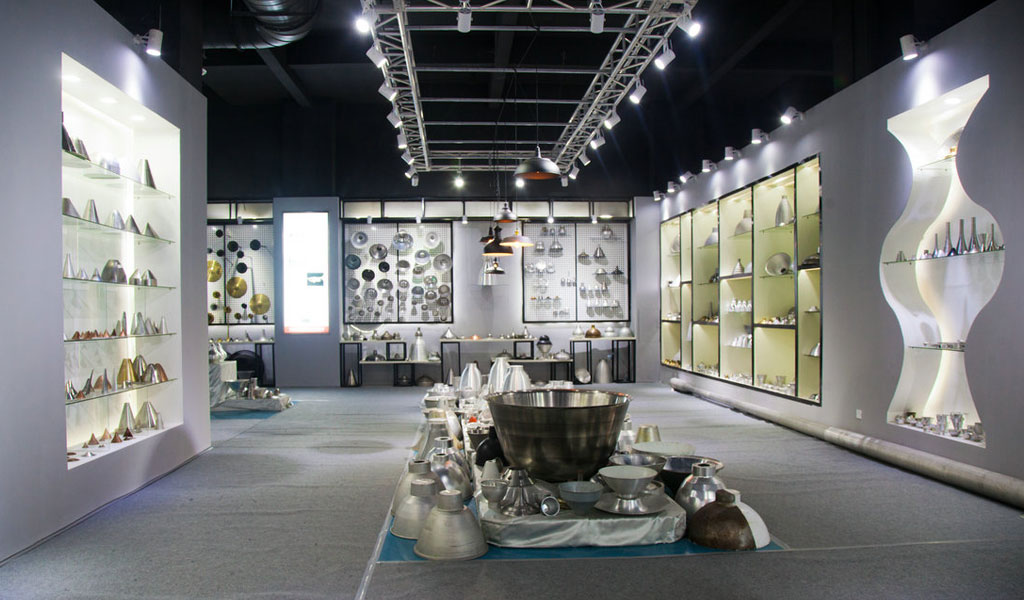
At BE-CU China Metal Spinning company, we make the most of our equipment while monitoring signs of excess wear and stress. In addition, we look into newer, modern equipment and invest in those that can support or increase our manufacturing capabilities. Our team is very mindful of our machines and tools, so we also routinely maintain them to ensure they don’t negatively impact your part’s quality and productivity.
Talk to us today about making a rapid prototype with our CNC metal spinning service. Get a direct quote by chatting with us here or request a free project review.
BE-CU China CNC Metal Spinning service include : CNC Metal Spinning,Metal Spinning Die,Laser Cutting, Tank Heads Spinning,Metal Hemispheres Spinning,Metal Cones Spinning,Metal Dish-Shaped Spinning,Metal Trumpet Spinning,Metal Venturi Spinning,Aluminum Spinning Products,Stainless Steel Spinning Products,Copper Spinning Products,Brass Spinning Products,Steel Spinning Product,Metal Spinnin LED Reflector,Metal Spinning Pressure Vessel,
